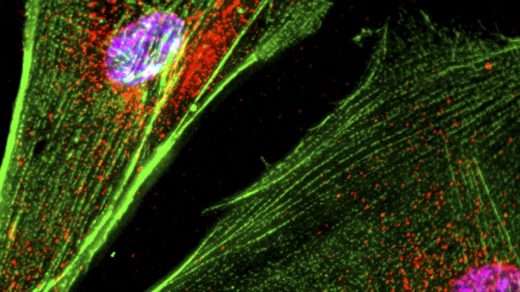A large Northern Ireland cohort found no clear pollution-related rise in Parkinson’s disease overall. Yet, subtle signals in adults under 50 suggest potential age-specific vulnerability, or misdiagnosed symptoms hiding in plain sight.
Study: Exposure to ambient air pollution and onset of Parkinson’s disease in a large cohort study. Image Credit: Kotcha K / Shutterstock
In a recent study published in the journal npj Parkinson’s Disease, researchers at Queen’s University Belfast, UK, examined associations between ambient air pollution exposure and PD onset.
In 2019, 8.5 million people had PD worldwide, with cases increasing due to aging populations. In the United States, PD incidence rates per 100,000 are 108–212 for individuals aged > 65 and 47–77 for those aged > 45. The etiology of PD is unclear, with interactions between genetic and environmental factors implicated. Some evidence links ambient air pollution to PD.
Studies on PD and ambient air pollution are heterogeneous, examining pollutants such as nitrogen dioxide (NO₂), particulate matter with a diameter ≤ 2.5 μm (PM₂.₅), PM₁₀, ozone, sulfur dioxide, and airborne metals like manganese, lead, and copper. Moreover, results are mixed, with some studies reporting robust statistical associations and others finding null or weak associations.
About the study
The present study investigated associations between ambient air pollution exposure and PD onset in a large Northern Ireland population cohort, a region noted by the authors as having a comparatively low-pollution context. The researchers used data from a linkage between pollution data, the Enhanced Prescribing Database (EPD), and the Northern Ireland Longitudinal Study (NILS). The NILS cohort was also linked to other administrative datasets, which provided demographic and socioeconomic data.
The pollution data provided annual 1 km grid-square modelled data for 2009–16 for NO₂ and PM₂.₅. The EPD contained data on all primary care prescriptions in Northern Ireland. The analytic sample included all NILS participants in the 2011 Census aged ≥ 28 who had not received PD medication before 2012. The study’s outcome was the onset of PD, which was tracked through the receipt of PD-related medication. A key feature of the models was accounting for the typical 11- to 13-month delay between symptom onset and diagnosis, a factor often overlooked in previous research.
Exposures were annual average NO₂ and PM₂.₅ levels across Northern Ireland. All subjects were assigned exposure values for these two pollutants based on their residential addresses from 2009 to 2016. The team used time-dependent Cox proportional hazard models to examine associations between pollution exposures and PD onset. Hazard ratios were estimated for the associations between exposure to ambient NO₂ and PM₂.₅ and receipt of first PD prescription.
Findings
The analytic sample included 292,925 participants. Of these, 3,089 received PD medication between 2012 and 2016. Individuals with PD onset were likely to be female, older, unemployed, inactive, never married, divorced, widowed, separated, live in more deprived areas, lack educational qualifications, and have poor general health.
Moreover, those with PD onset had broadly comparable exposure to NO₂ and PM₂.₅. The team found some evidence of association between PD onset and PM₂.₅ exposure in unadjusted models. However, the association with PM₂.₅ was no longer evident when models were adjusted for differences in household, individual, and neighborhood factors.
There was no association between PD onset and NO₂ exposure in adjusted or unadjusted models. No associations were noted for either sex in adjusted models; however, a significant association was observed between PD onset and PM₂.₅ exposure for females in unadjusted models. In people aged ≥ 50, there were no significant associations between PD onset and pollution exposure.
However, in adjusted models, a modest but statistically significant positive association appeared between PM₂.₅ exposure and PD onset for those aged < 50, with an estimated 5% increase in risk per 1 μg/m³ increase in exposure (Hazard Ratio of 1.05). Moreover, there was weaker, more tentative evidence of positive associations with NO₂ exposure in this age group. The findings of no associations between pollution exposure and PD onset in the overall cohort were robust in sensitivity analyses. However, the authors noted that the significant association for PM₂.₅ in the younger age group disappeared when a stricter definition of PD onset was used (requiring prescriptions in two consecutive periods), and the tentative association with NO₂ also became non-significant in other robustness tests.
Conclusions
In sum, the results align with previous studies that reported positive, unadjusted associations between medium-term PM₂.₅ exposure and PD onset. However, the associations were no longer evident upon adjustment for confounders, consistent with many existing studies. Moreover, there was no evidence of associations in subsamples by sex and among those aged ≥ 50. Nonetheless, a significant association was observed between PM₂.₅ exposure and PD onset in people aged < 50.
In addition, there was a weaker tentative association with NO₂ exposure in those aged < 50. While this could indicate differences in PD etiology across age groups, the authors propose a “more cautious interpretation.” They suggest this age contrast may be explained by the possibility that the prescription-based measure disproportionately overestimated PD onset in those aged < 50, as PD-related medications could be used for other conditions with overlapping symptoms, such as dystonia and restless leg syndrome. The authors state this may be an association with a “broader class of conditions” rather than just PD.
Finally, the researchers stress an important public health message, stating, “It is crucial to emphasise that our overall null finding should not undermine the importance of reducing population exposures to PM₂.₅ or NO₂.” They note that reducing these exposures remains vital due to robust evidence linking pollution to many other adverse health outcomes.
- Jahanshahi B, McVicar D, Rowland N (2025). Exposure to ambient air pollution and onset of Parkinson’s disease in a large cohort study. npj Parkinson’s Disease, 11(1), 291. DOI: 10.1038/s41531-025-01156-z, https://www.nature.com/articles/s41531-025-01156-z
This news item came from: https://www.news-medical.net/news/20251015/Air-pollution-and-Parkinsone28099s-What-a-292000-person-study-reveals-about-hidden-risks.aspx



